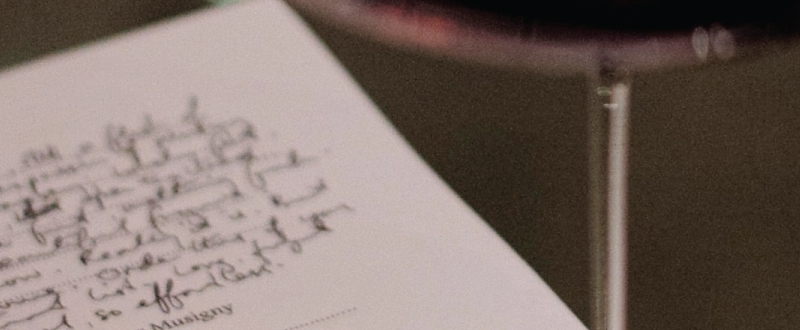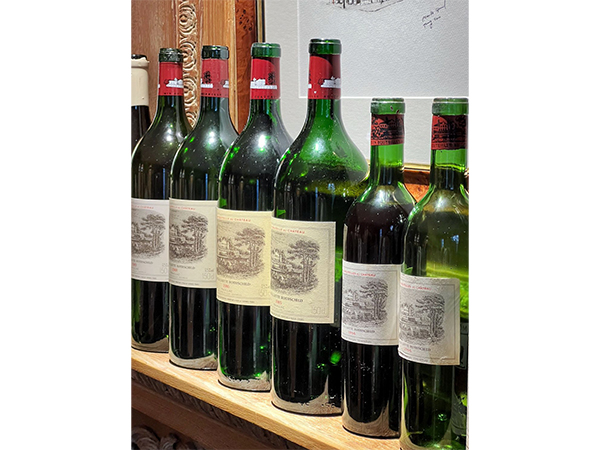

By Linden Wilkie, 20 October 2023
Last year after a very “long lunch” my good mate Gareth Birchley agreed to run the London Marathon. At the time, with some effort, he may well have been able to run around the dining room table, but let’s just say, that like me, he was not known for his fitness, and that long lunches were more his talent. If wine-fuelled lunch was to be a host’s feature event at the 2024 Paris Olympics, he’d be England’s medal hope.
For months on IG we followed posts of his training efforts, which were so entertaining, so endearing, that on the day of the run (which he completed) he had a long retinue of fans lining up to cheer him on. Here’s his IG reel summarising the story.

Gareth Birchley at London Marathon 2023
The serious side to all this was that alongside a couple of mates, he garnered enormous support from the wine and hospitality trades in donating lots, and raising a staggering £275,000 for the MND Association for motor neurone disease research.
One of those lots was a wine-tasting lunch at 67 Pall Mall London, hosted by me, the meal provided by them, and the wine provided by the winning bidder. My friends Richard and Katherine bought that, and focused on Lafite as the central flight of the tasting – and the focus of the rest of this note to you.

While five vintages of Lafite is a nice lunch idea at the best of times, what was special here was the close bunching of vintages. In really getting to understand a wine, the starting point comes from seeing its translation of grape variety(ies) and terroir – in this case, a Cabernets-predominant blend with Merlot, on the finest gravels of Bordeaux’s Médoc, at Pauillac.
But the other dimension is time. Wines evolve from their embryonic expression in cask, through youth, a plateau of maturity, decline, and at some point, like all life, expiration. In great wines, like Lafite, this is usually a long arc over many decades, with that plateau of both vigour and maturity lasting, itself, many decades. What makes fine wines so interesting, is their capacity to also express the specific characteristics of each single vintage, each vintage traversing the arc of its life with its own vintage DNA intact. Super big crop? – the wine will feel lighter. Very hot summer? – the thickened skins in response will give more tannin, and the accumulation of sugars more richness.
When there are decades’ worth of vintages to delve into, we can imagine these annual layers like the rings of a tree, or the pages of a biography, each one building the complex story of the whole.
Richard and Katherine brought magnums of 1985, 1986, 1988 and 1989, which then together, gave us perhaps a “chapter” in the life of Lafite. Spoiler alert – it’s a good read! To follow, two bottles of 1966 – one dead already, the other lovely, but fading, in gentle but terminal decline. It gave us a glimpse into a different chapter. But let’s focus here on what we learned about 1980s Lafite.
1985 Château Lafite-Rothschild, magnum
The lightest depth of colour in the ‘80s flight, a light russet garnet, fairly clear in the glass; this is fragrant, fresh, cool and minty in tone, with red and black fruit, a green-tinged ripe aroma; the palate is soft, rounded, understated and moderate in weight, there’s a lot of charm, and it is hard not to drink quickly, the profile is at the red end of the currant spectrum, a touch of truffle, brambles, and a green-ripe tone. It’s charming wine, and it worked so well on its own, as well as with the English roast sirloin. Exceptional really.
95
One vote for “wine of the lunch”, three votes for “favourite Lafite of the lunch”
1986 Château Lafite-Rothschild, magnum
A mature, but deeper tone and depth of colour than any of the others; the nose is ripe, brooding, rich in iodine and mint, and a touch of spice; the palate is full, but there is no excess here, it’s more chiselled, with thick, ripe tannin framing it – it is a wine of structure, though this structure melts, and the wine reveals good concentration of complex fruit, a really intense core, and sweetness within the sense of thickness on the finish. It’s not so fun – more ‘impressive’ – to drink without food, but with the roast sirloin, it really came into its own.
95
No votes for “wine of the lunch”, five votes for “favourite Lafite of the lunch”
1988 Château Lafite-Rothschild, magnum
Bright full colour, holding some freshness; the aroma is low key, but very pure in fruit, cool and curranty, with mint, and initially a touch of fresh green peas, though this moved to the background with air; this is the most crystalline and pure of the four ‘80s Lafite magnums, it is very straight, with a sense of perfect fruit, succulent freshness, vibrancy, and a relative sense of youth still. It’s very fragrant – on the nose, and in its inner-mouth expression, and it has a subtly building sense of intensity – a slow burn. It’s understatement means it takes time to see just how great it is.
96
Eight votes for “wine of the lunch”, four votes for “favourite Lafite of the lunch”
1989 Château Lafite-Rothschild, magnum
A fairly full colour, with a broad bricked rim; its dark and minty on the nose, wild and spicy, with an exuberance suggesting richness, in contrast to the very pure straight expression from the ’88, this has something more sun-scorched, what Michael Broadbent MW used to refer to as ‘hot tiles’; the palate is rich in fruit and extract, with a little sense of glycerin not as present in the others, it’s a sexier style Lafite, lush in fruit, more wild in character, just not quite as refined, ultimately.
94
One vote for “wine of the lunch”, no votes for “Lafite of the lunch”

As I am wont to do at gatherings like this, I asked everyone to vote for their wine of the lunch, and for their favourite Lafite of the lunch. Now, as spoiled as we were to have five vintages of Lafite, there were other wines served, and one person gave their wine of the lunch vote to the magnum of 1988 Château d’Yquem, an absolutely stunning example, and one person voted for the 1963 Quinta do Noval vintage port, which bookended the lunch beautifully. Others, it seems, used the two votes as an effective way to split their Lafite vote. Taking the two votes together, it was pretty clear the 1988 (12 votes) was group favourite (would any of us have guessed this?), followed by close placing for 1986 (5), and 1985 (4), then 1989 (1). No one voted for the bottle of 1966, though it was a perfectly enjoyable wine.
And what can we say about this 1980s chapter in the life of Lafite? Firstly, I think that there is a transparency to it. Perhaps that’s the way it is/was made. Each vintage really expressed that vintage – it was not masked behind some counter-push in winemaking, to express something else. Logically, why push when the soil and the vines give so much quality so easily? But I think it’s been there in the culture of Lafite also – they are not there to “wow” anyone, they trust in what they have.
Secondly – and consequently, Lafite is not so obviously easy to understand. To put that another way, it is easy to underestimate. It is a wine that takes time – both in the cellar, and in the glass. All four ‘80s magnums are in their apogee, but perhaps the ’86 and ’88 have still more to reveal with cellaring, and the ’85 and ’89 feel like they are on a long plateau. (Indeed, the ’85 tasted just like this nearly 20 years ago, and has hardly shown any sign of dipping since then). Our lunch spanned over five hours, with all the Lafites given at least half that time in our wine glasses. All changed significantly over that time, revealing real depth, and complexity. It’s not possible to know Lafite by popping, pouring, and moving on to the next wine.
It was a thrill to try them all together like this, to understand Lafite just that little bit better – my thanks to Richard and Katherine for winning this lot for charity, and for bringing them to lunch, and for Gareth Birchley, for reminding us that odds can be beaten!
Speaking of which, his partner Alice (in Wineland) has taken the baton in raising money for motor-neurone disease research. She is training to run the London Marathon in aid of the MND Association next year, so follow her for that journey.
